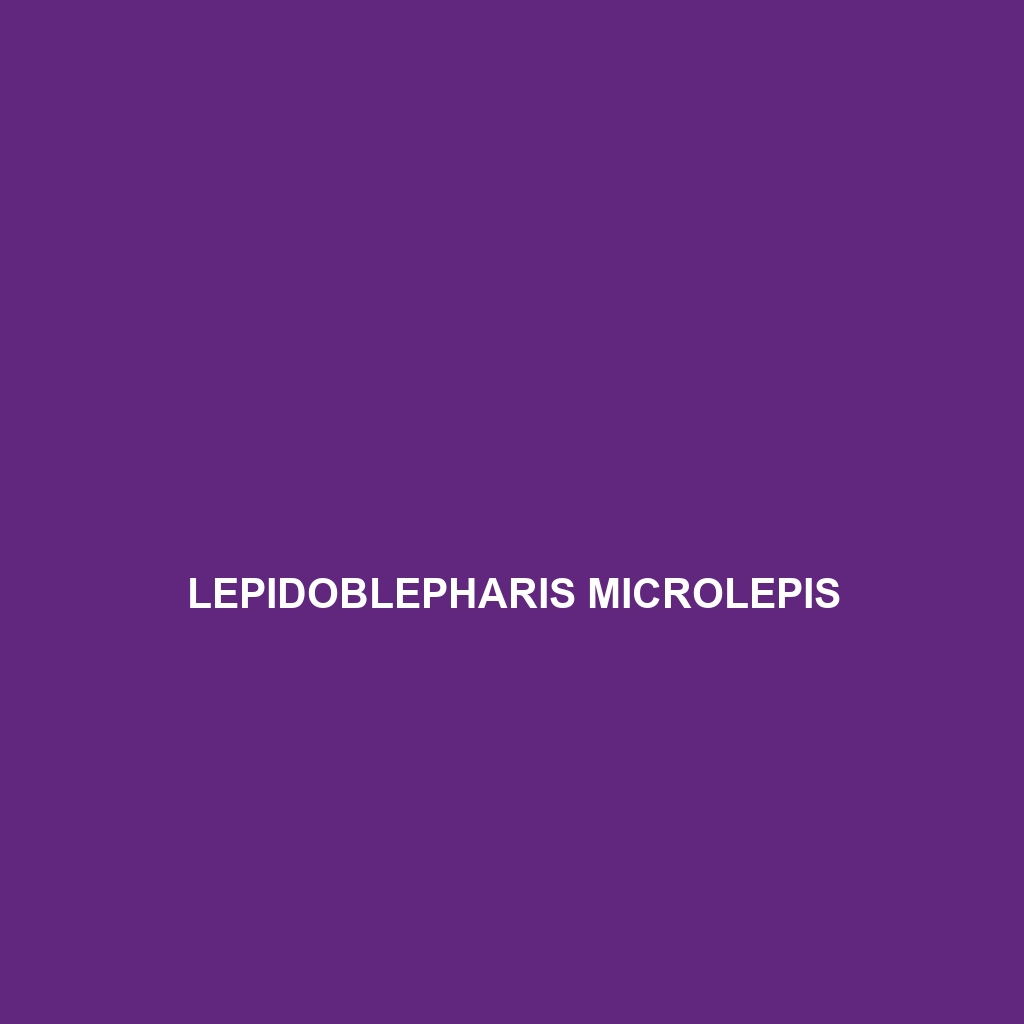Common Name
Lepidoblepharis microlepis
Scientific Name
Lepidoblepharis microlepis
Habitat
Lepidoblepharis microlepis, also known as the tiny leaf-toed gecko, primarily inhabits the humid rainforests of Central America, particularly in regions such as Costa Rica and Panama. These geckos are adapted to thrive in environments where high humidity and warm temperatures are prevalent, making them common in the understory layers of tropical rainforests. The species can also be found in nearby temperate forests where they prefer leaf litter and mossy surfaces. With a preference for shady, moist areas, they are often seen basking on tree trunks and using the dense foliage for cover against predators. Their presence in these intricate ecosystems highlights their role in maintaining the balance within forest habitats.
Physical Characteristics
Lepidoblepharis microlepis is a small gecko, typically measuring between 4 and 6 centimeters in length. One of its distinguishing features is its elongated and slender body, which is covered in tiny, granular scales that enhance its camouflage against the leaf litter. The coloration varies from light brown to gray, often interspersed with darker spots or bands, aiding in blending with its environment. Their toes are remarkably specialized, with microscopic hairs that help them adhere to diverse surfaces. This species exhibits a unique ability to change color slightly in response to its surroundings, an adaptation that protects it from predators and helps in hunting.
Behavior
The behavior of Lepidoblepharis microlepis is intriguing, particularly its nocturnal habits. Active primarily at night, these geckos exhibit a host of unique behaviors. During mating rituals, males perform elaborate displays involving head bobbing and tail curling to attract mates. Social interactions are generally limited, as these geckos tend to be solitary, coming together only to mate. Their keen eyesight allows them to hunt for insects and other small arthropods in low-light conditions, showcasing their adaptability to nocturnal life. This behavior enhances their survival in dense rainforest environments where competition for resources can be fierce.
Diet
Reproduction
The reproductive cycle of Lepidoblepharis microlepis typically occurs during the wetter months, aligning with the enhanced availability of food. Breeding season is marked by elaborate courtship displays. Following successful mating, females lay a clutch of one or two eggs in secluded, moist areas, often hidden within leaf litter to protect them from predators. The gestation period lasts approximately six to eight weeks, after which the offspring hatch as miniature versions of adults. Parental care is minimal, as the hatchlings are immediately independent and capable of foraging for food shortly after emerging.
Conservation Status
As of the most recent assessments, Lepidoblepharis microlepis is classified as a species of “Least Concern” by the International Union for Conservation of Nature (IUCN). However, like many species, it faces habitat loss due to deforestation and climate change, impacting its population stability. Conservation efforts are focused on habitat protection and restoration to ensure that the delicate ecological balance of their rainforest environments is maintained. Monitoring populations in key habitats is crucial for ensuring that this gecko continues to thrive in its natural ecosystem.
Interesting Facts
One fascinating aspect of Lepidoblepharis microlepis is its unique adaptation in its skin texture. Unlike many other reptiles, this gecko has a new special water-repellent quality attributed to the microscopic structures on its skin, which is reminiscent of the properties found in lotus leaves. This adaptation allows it to remain dry in its moist rainforest habitat. Additionally, its ability to alter its skin color slightly enhances its camouflage, making it a master of disguise among the leaves and shadows.
Role in Ecosystem
Lepidoblepharis microlepis plays a significant role in its ecosystem as both a predator and prey. As insectivores, these geckos contribute to controlling insect populations, supporting the health of their forest habitats. They also act as a food source for larger predators, integrating into the food web. Furthermore, by aiding in the dispersal of plant seeds through their feeding habits, they contribute to the regeneration of their rainforest environment, highlighting their importance as a keystone species in maintaining ecological integrity.
